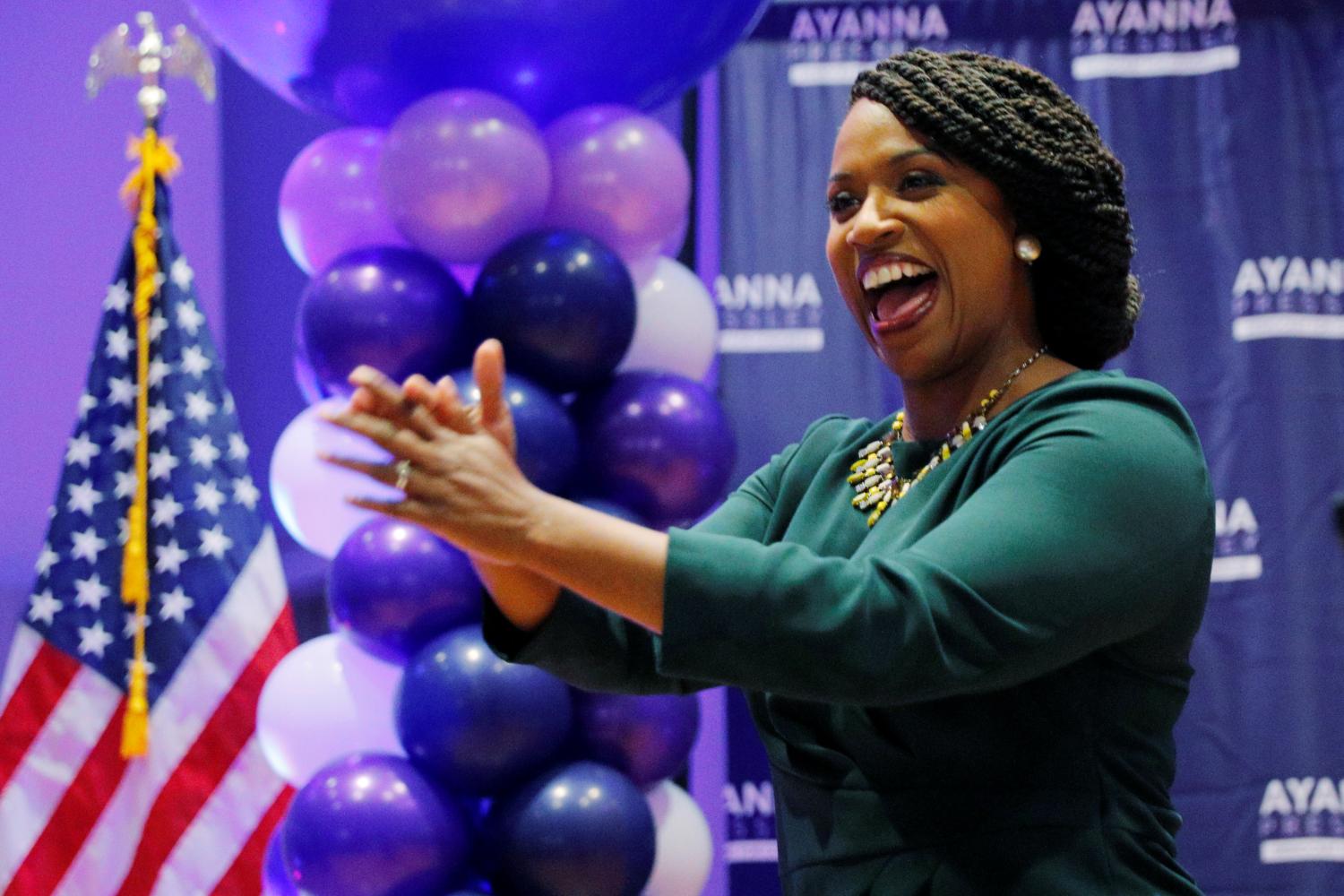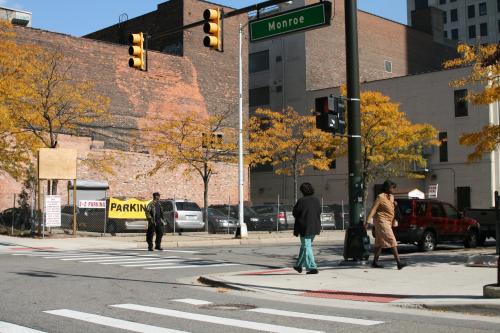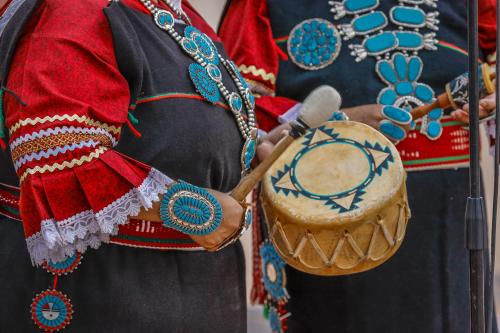Fifty years after the election of Shirley Chisholm as the first African American woman to serve in Congress, black women are still making political history across the country. London Breed became the first black female mayor of San Francisco when she was sworn in to office in July 2018. This month, Ayanna Pressley won the Democratic primary, and it is expected that she will become the first woman of color elected to Congress from the commonwealth of Massachusetts, besting 10-term Democratic incumbent, Michael Capuano, with her 17-point victory. From their overwhelming impact in the 2017 Alabama special election for the U.S. Senate seat vacated by U.S. Attorney General Jeff Sessions, to the increase of black women running and winning elections at the state and local levels, there is clearly a new wave of electoral momentum.
By analyzing the demographic variables associated with the elections of black women, we can examine circumstances potentially impacting electoral success. Those insights can be used to create a framework—a blueprint—that can help boost black women, and their supporters, to succeed in attaining more reflective representation in elected office at various levels of government.
The Brookings Institution and the Higher Heights Leadership Fund (hereafter Higher Heights) collaborated to create a database comprised of elected officials at the federal, state, and municipal levels, as well as aspirant candidates. Information regarding their districts was also collected and analyzed to pinpoint predictors of electoral success.
Based on the preliminary analysis, three major findings emerged that will be the basis of deeper exploration:
- The concentration of black residents in a district is positively correlated with black women’s electoral success through 2016, the basis of the dataset. Roughly two-thirds of black women have been elected in majority-black districts (>50 percent).
- Recent mayoral victories among 100 of the most populated cities and unsuspecting wins throughout various primaries this cycle show black women are viable in districts in which blacks are not the majority. Although a third of all black congresswomen and female state legislators were elected in minority-black districts, recent and past successes suggest black women are creating more and different routes to elected office.
- States with the highest percentages of black residents offer viable opportunities for black women to be elected statewide and in minority-black districts as over 500 majority-black constituencies picked a representative in 2016, yet only one-third of those seats were contested by black women.
Creating the dataset
The dataset contains information about incumbents and candidates for U.S. Congress, state legislatures, governorships, lieutenant governorships, attorneys general and secretaries of state in each of the 50 states and Washington, D.C in 2016. Data regarding incumbent mayors are also included for the nation’s 100 largest incorporated cities. The dataset relies heavily on previous work from the Reflective Democracy Campaign, a nonprofit that analyzes the demographics of political leadership, and the 2012-2016 American Community Survey 5-year estimates. It holds records of the personal characteristics of each candidate (race, sex, status as incumbent or candidate, and political affiliation), as well as a demographic and political overview of the seat’s constituency (median age, educational attainment, and racial distribution).
Findings
Black women made up 6.6 percent of the country’s population and 6.5 percent of the voting age population in 2016, but accounted for 3.1 percent of federal and state elected officials. There were 287 black female incumbents in 2016. Included in this group were 18 U.S. Representatives, 1 U.S. Senator, 193 state representatives, 67 state senators, 1 lieutenant governor, 0 governors, 0 attorneys general, 0 secretaries of state, and 5 mayors of top 100 cities. Of the black female incumbents, 62 percent hold seats in majority-black districts (where the proportion of the population that is black is above 50 percent) and 77 percent of elected black women represented minority white constituencies (includes all people of color). In comparison, 63 percent of black male incumbents, 2 percent of white female incumbents, and 1 percent of white male incumbents hold seats in majority-black districts. In addition, black women make up two percent of candidates for legislative and executive offices in the database. In contrast, black men make up five percent of candidates; white women 19 percent; and white men 65 percent (see Figure 1).

Mayoral representation in majority-black cities is vital as 10 percent of neighborhoods in the country are majority black, and they are home to 41 percent of the black population. Since 2016, black women added two mayoral seats. Black women currently lead seven of the nation’s 100 largest cities, mirroring their representation in the electorate. While the total number of seats gained in mayors’ offices is small, they’ve expanded kinds of cities a candidate can realistically consider as a viable option. The degree to which a district is comprised people of color rather than its black share is becoming more important. Mayors London Breed of San Francisco, Vi Lyles of Charlotte, Muriel Bowser of Washington D.C., Catherine Pugh of Baltimore, Keisha Lance Bottoms of Atlanta, LaToya Cantrell of New Orleans, and Sharon Weston Broome of Baton Rouge represent majority- and minority-black constituencies with varying educational, age and economic demographics.
What is clear is that party affiliation matters. Black female elected officials leaned heavily toward the Democratic Party. Of the 285 black women incumbents in the dataset, 280 were Democrats and 5 were Republicans.
In the map below, darker regions without dots highlight the geographic areas, particularly in the South, where black women are primed to capture state house and senate seats, as well as U.S. House of Representative positions. The map also reveals where black women hold office in minority-black districts.

The states with the highest share of African Americans pose significant demographic potential for black women. Here is a listing of the five states with the highest share of African Americans and the top four counties with no black women representation within them.

Again, if people of color become an important unit of analysis, we should shift our analysis from percent black to percent people of color. In this regard, looking at areas where black women do not hold public office shows where there are opportunities for political advancement. The following map displays the share of each county’s population who are people of color for counties which are not represented by a black woman either in state legislatures or the U.S. House of Representatives.

Whether or not black women were on the ballot for a certain seat was not determined by the racial makeup of the electorate, suggesting there are several paths to electoral success. Even though constituencies in which blacks made up a large share of the voting age population were more likely to elect black women, black women appeared on ballots at roughly equal rates regardless of the demographic makeup of the constituency. Over 500 majority-black constituencies picked a representative in 2016, yet only one-third of those seats were contested by black women. The proverbial glass ceiling is at the point of entry—more black women running can break it.
In spite of these successes, black women are under-represented as candidates for elected office, representing about 2 percent who decide to challenge incumbents. Running black women in minority-white districts will more than likely change those percentages.
Future reports will focus on levels of educational attainment. A higher percentage of black women enrolled in college between 2009 and 2012 (9.7 percent), exceeding Asian women (8.7 percent), white women (7.1 percent) and white men (6.1 percent), according to a 2016 report by the National Center for Educational Statistics. These gains may have impacted how black women are perceived as candidates as well as the social networks that clear a path toward elected office.
Building on lessons learned
This newly analyzed data can be combined with recent anecdotal lessons to gain a clearer understanding of the unique challenges that black women face when running for public office; the kind of encouragements that moves them to declare their candidacies; and the resources that enable them to run, win and lead.
Despite being virtually tied with white women for the highest rates of voter registration and turnout, black women are less likely to be encouraged and more likely to be discouraged from running for offices than their white counterparts or black men, according to a 2015 report from Higher Heights and the Center for American Women in Politics. Moreover, when black women run for office, they are less likely to receive the early dollars and early endorsements that often position candidates to mount successful campaigns. Finally, despite a deep well of successful grassroots and political activism, black women are often challenged to find the type of culturally relevant candidate training that can help them translate their experience into effective campaign strategies.
Recognizing both the distinct challenges to and opportunities for expanding black women’s political representation, Higher Heights and several other organizations have been working to build a pipeline of black women who are prepared to run for office. This multi-pronged effort has included culture-shifting communications work that highlights and contextualizes black women’s tradition of leadership; candidate training programs for black women who are exploring running for office; and expanded opportunities for black women’s civic engagement beyond the ballot box. Several lessons that will be useful in expanding the number of black women who run for office have emerged from this work. They include:
- Black women are encouraged to pursue office by examples of successful black female candidates such as Stacey Abrams, who is running for Georgia governor; Ayanna Pressley, who bested a long-term incumbent in the primary race for Massachusetts’ 7th U.S. Congressional District seat; and Lauren Underwood who beat out six white, male candidates during the primary race for Illinois’ 14th U.S. Congressional seat in a majority-white district. These candidacies create a role modeling effect that will inspire the next cohort of black women to consider running for office or higher office, and also prompt them to consider offices previously believed to be out of reach.
- A multi-year investment in a comprehensive recruitment and training strategy can build on recent gains to expand a pipeline of black women ready to run, win and lead on the federal, state and local levels.
- We can create an environment for stakeholders, donors and political institutions to lend critical early support by driving the narrative that black women are viable political representatives, and that there are broader pathways to victory for them than previously envisioned.
- Grassroots activism around issues such as education, economic opportunities, the environment, and safe and healthy communities are ripe recruiting grounds for black female political candidates. For example, Lucy McBath, whose activism was sparked by the 2012 death of her son Jordan Davis by gun violence, is running to become U.S. Rep. for Georgia’s 6th Congressional District.
- An active network of black women, allied supporters and advisors is key to a successful campaign for black female candidates, particularly early on.
About Higher Heights Leadership Fund
Higher Heights Leadership Fund is the only organization dedicated solely to harnessing Black women’s political power and leadership potential to overcome barriers to political participation and increase Black women’s participation in civic processes. Higher Heights is investing in a long-term strategy to expand and support Black women’s leadership pipeline at all levels and strengthen their civic participation beyond just Election Day.
Learn more at HigherHeightsLeadershipFund.org
The Brookings Institution is committed to quality, independence, and impact.
We are supported by a diverse array of funders. In line with our values and policies, each Brookings publication represents the sole views of its author(s).








